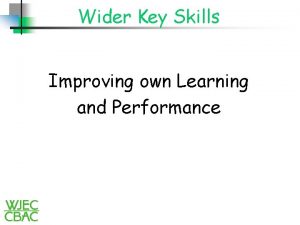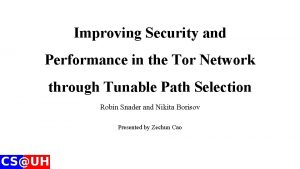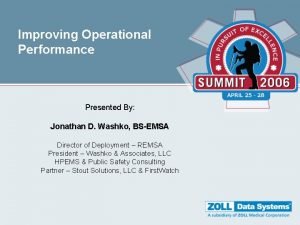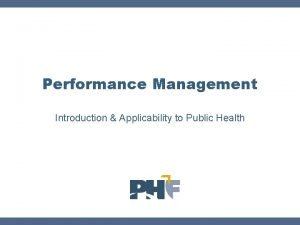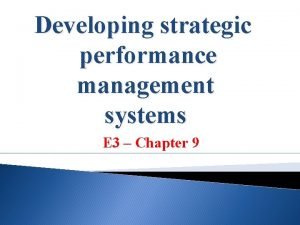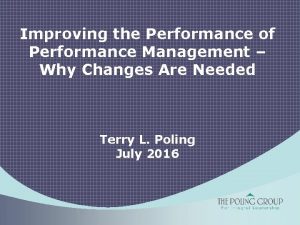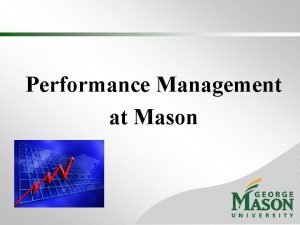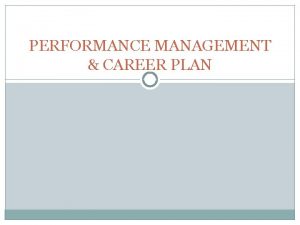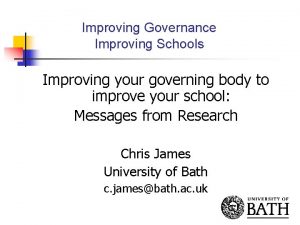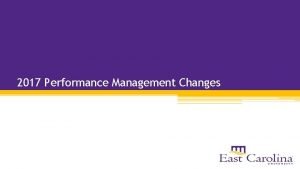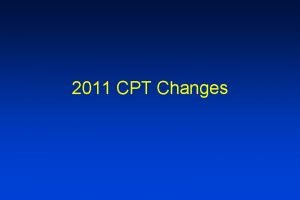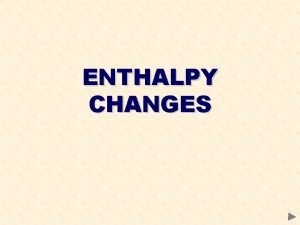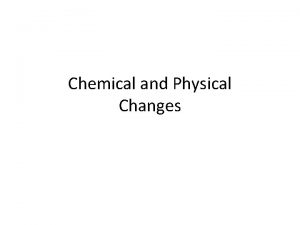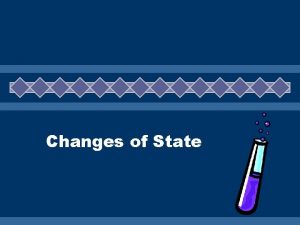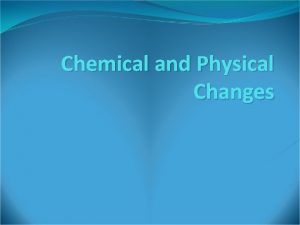Improving the Performance of Performance Management Why Changes


















- Slides: 18

Improving the Performance of Performance Management – Why Changes Are Needed Terry L. Poling July 2016

“Performance reviews are a curse on corporate America. ” - Samuel Culbert, UCLA Researcher

Today’s Agenda q What’s Changing: Latest Trends q Our Assessment Experiences q Common Assessment Errors q What’s Needed: 3 Essential Elements q Improving Engagement & Feedback q Using the SARS Model

What’s Changing: Latest Trends

What’s Changing: Latest Trends ü 90% of companies surveyed by SHRM reported using annual reviews, but only 30% believed they did it well. (Fast Company, 2015). ü Only 46% of millennials believe their managers delivered on their expectations for feedback. (Workforce 2020 Research). ü According to 2015 Wakefield Research on 1, 000 full-time millennial-age employees: ü ü ü 74% feel “in the dark” in terms of their performance. 62% report that they are frequently “blind-sided” by their managers. 59% believe their managers are unprepared to give feedback at the time of their reviews. 50% say annual reviews focus mostly on “gaps” and make them feel they can’t do anything right. Only 32% of review conversations encourage or allow employees to share their own thoughts on performance. 69% see their company’s performance appraisal system as flawed.

Assessment Experience Recall a memorable time or situation in your life when you were assessed, judged, or evaluated. It could have occurred when you were in school, at home, at work, on stage, in the gym, or elsewhere. Identify the family member, teacher, coach, colleague, boss, or other person who was involved. What happened? What message did you receive? How did it effect or impact you?

Assessment Errors Common Biases Ø “Halo” or “Horns” Effect Ø “Same As Me” Syndrome Ø Recency Effect Ø “Super Human” Strictness Ø Leniency Ø “Middle-of-the-Road” Effect Ø Third Party Influences

What’s Needed: Three Most Critical Elements q Active Two-Way Engagement q Shared Expectations q Frequent and Developmental Feedback

Frequent & Developmental Feedback Ø Two primary functions of feedback Ø To reinforce behaviors Ø To correct behaviors Ø Two ways to house-break a puppy Ø Most powerful and least utilized management tool

MISSED HIGH-LEVERAGE OPPORTUNITIES Reinforcement Feedback Corrective Feedback

Engagement & Feedback Guidelines More Effective Ø Specific Ø Descriptive Ø Behavioral Ø Timely Ø Usable Ø Direct Ø Supportive Ø Future-Oriented Ø Two-Way Less Effective Ø General Ø Evaluative Ø Personal Ø Delayed Ø Available Ø Indirect Ø Threatening Ø Past-Oriented Ø One-Way

SARS Model Actions Situation Results

SARS Model As a Planning Tool: Co-Creating Shared Expectations Projects/Tasks Opportunity/Problem Objectives/Outcomes

SARS Model As an Assessment Tool: Engaging for Frequent & Developmental Feedback Behaviors/Decisions Rationale/Motivation Impact/Consequences

SARS Model Actions Situation Results

Applying the SARS Model q Use the cards provided on your table. q Decide if you’ll use SARS to: 1) co-create shared expectations with someone, or 2) engage someone in a feedback conversation. q Make notes on Situation, Actions, Results. q Share your plan with a partner and seek feedback and suggestions.

Be Sure To Include In Your Performance Management Process q Active Two-Way Engagement q Shared Expectations q Frequent and Developmental Feedback q Some form of the SARS Model

QUESTIONS? COMMENTS? View Presentation at http: //www. thepolinggroup. com/blog-a-point-of-view/ View Forbes Article at https: //www. facebook. com/The-Poling-Group-Inc 662840933785443/
 Andreas carlsson bye bye bye
Andreas carlsson bye bye bye Changes in latitudes, changes in attitudes meaning
Changes in latitudes, changes in attitudes meaning Physical vs chemical change examples
Physical vs chemical change examples Improving own learning and performance examples
Improving own learning and performance examples Improving security performance
Improving security performance Improving operational performance
Improving operational performance Improving software economics in software project management
Improving software economics in software project management Don't ask why why why
Don't ask why why why Chapter 11 performance appraisal - (pdf)
Chapter 11 performance appraisal - (pdf) Behaviorally anchored rating scales
Behaviorally anchored rating scales Performance management activities
Performance management activities Why is performance management important?
Why is performance management important? Hát kết hợp bộ gõ cơ thể
Hát kết hợp bộ gõ cơ thể Frameset trong html5
Frameset trong html5 Bổ thể
Bổ thể Tỉ lệ cơ thể trẻ em
Tỉ lệ cơ thể trẻ em Voi kéo gỗ như thế nào
Voi kéo gỗ như thế nào Chụp tư thế worms-breton
Chụp tư thế worms-breton Bài hát chúa yêu trần thế alleluia
Bài hát chúa yêu trần thế alleluia



